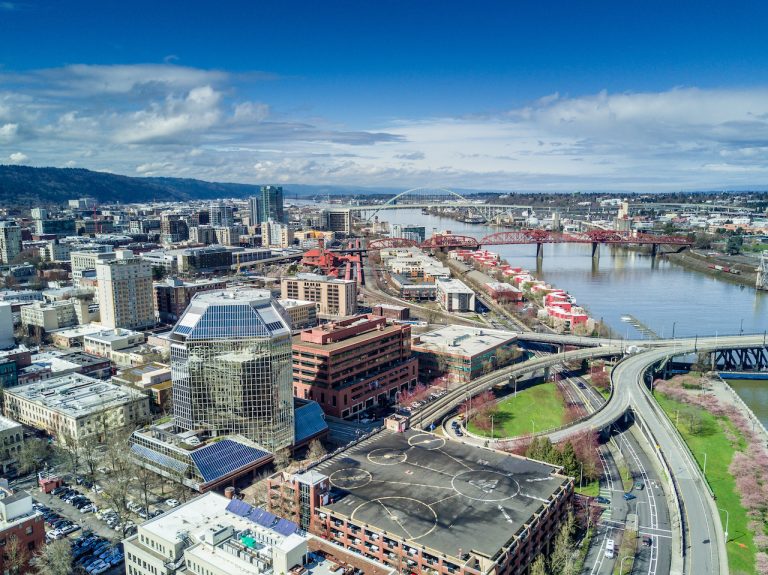Urban Mobility and Access to Transportation in Sub-Saharan Africa
As I started to get into the background for this work, I found that a lot of the writing was heavily focused on technical and infrastructural issues, but didn’t focus on governance, leadership, or what it takes to facilitate transformative change. This question of governance in urban transport and mobility was strongly established in the original TUT-POL project. The expansion of this research into Sub-Saharan Africa allowed us to get an inside look at differences in the governance of urban transport in this region. It enabled us to explore what works and what doesn’t and helps explain why certain places are experiencing challenges and hopefully also shed light on how to solve those challenges.
Governance of Metropolitan Transport: Power, Leadership, and the Essential Art of Building Lasting Alliances
“This whole project started because I saw that almost all presentations at the Transportation Research Board (TRB, one of seven program units of the National Academies of Sciences, Engineering, and Medicine) were about what to do to organize metropolitan transport. But there was very little about how to actually get things done. When I was visiting there, I actually asked the Chair of the TRB’s Executive Committee why, and his answer was ‘How is much more difficult than what.’ And he was right.”
Behavior Change Case Study: Mayor Elizabeth Patterson
In describing her community’s coalition approach involving local people as leaders and organizers of educational activities and awareness-building events, Mayor Patterson is telling the audience how her community is making their climate and behavior change activism SOCIAL.
As she describes “rolling out the green tech welcome mat”, Mayor Patterson’s mindset reflects her city’s efforts to make Benicia more hospitable and welcoming to businesses whose models are not reliant upon fossil fuels. In other words, the Mayor and her team are working to change the DEFAULT perceptions about their community and its historic identity as a refinery and manufacturing town.
Behavior Change Case Study: The Brooklyn District Attorney’s Office
The Brooklyn District Attorney’s office reforms provide an excellent example of behavior change requiring attention and effort on many fronts. From systems and technology, to human resources and processes, multiple changes have been underway in parallel within this organization.
Using “Pop-Up” Strategies to Realize Lasting Impacts in The Public Realm
During the Mobilize Summit, urban transport and development practitioners come together alongside world-class researchers to celebrate best practices and accelerate implementation of sustainable transport projects grounded in equity. All the panelists agreed about the need to help decision-makers trust and believe that change is possible. “For instance, everyone thought rampant bike theft in Medellín would be the inevitable downfall of our bike share program, but it just didn’t happen that way,” explained Lina. “Our early adopters were the ‘rock stars’ who helped change hearts and minds simply through their passionate embrace and adoption of cycling.”
Behavior Change Case Study: City Systems & Affordable Housing
In East Palo Alto, California, a multi-faceted, coalition-driven movement is afoot to assure wider access to affordable housing. This effort, informed by behavioral economics, is helping local homeowners understand and navigate the municipal permitting process for building a new accessory dwelling unit on their property. At the same time, this coalition, of which the nonprofit City Systems is a part, is working to streamline the process of legalizing informal conversion projects already completed without permit approvals in place.
Planning Sustainable Public Transport Using an Intersectional Lens
I work to ensure that a more diverse point of view, especially the gender-specific, informs the planning, design, operations, and user experience of transport systems. Safe and reliable access to public transport is a key driver of so many issues we face as a society. Cities cannot aspire to being inclusive unless more attention is given to this aspect of sustainable transport.
Behavior Change Case Study: Greenfield Labs
Greenfield Labs was initiated three years ago by Jim Hackett, now CEO of Ford Motor Company. At the time of the Labs’ inception, Hackett was an advisor to the company’s fledgling mobility pursuits. Before Ford, he’d led Steelcase, a forward-thinking office furniture company that embraced and found success in its application of human-centered design solutions. “He brings that same innovative sensibility to Ford,” says Ryan Westrom, Mobility Partnerships Lead at Greenfield Labs. “The point of Greenfield Labs is to bring human-centered ideation to Ford. It offers us an opportunity to revise, hone, and tweak our existing products while also shaping Ford’s broader mobility pursuits.”
Behavior Change Case Study: Greater Portland (Maine) Council of Governments and Opioid Misuse
“Historically, government leaders haven’t felt it was in their purview to take action in response to the opioid problem, or to make active decisions about it. What I always say is that ‘opioid misuse is a community problem that requires a community solution.’ There are root issues that lead to the problem, and we must tackle those aspects of the problem in order to really solve it.”
Designing Roadway Infrastructure Through the Lens of Child Safety
On offer at this year’s MOBILIZE summit were several tools, resources, and case studies of projects whose leaders aim to re-humanize public roadways and disrupt the automobile-centric culture that dominates them in many places. What follows are a few key highlights focused on advancing universally accessible improvements to the built environment.
Behavior Change Case Study: Remix
The Remix team brings a multidisciplinary approach to their change management work, which helps them complement municipal government clients, whose stakeholders tend to be siloed into separate departments. “We’re fairly unique in the software industry, because our team is blended,” Tiffany explains. One half of their team is comprised of transportation practitioners and policy experts, and the other half is made up of software developers and designers. “We bring to transportation planning the culture of co-creation and fast iteration that is typically found in the software industry,” she says, “so, we go into a room having both those muscles to flex.”
Behavior Change Case Study: LA Department of Water & Power – The Shared Solar Program
Once LADWP acknowledged the skewed trends in solar participation, the utility began promoting its programs in lower-income communities and communities of color. These areas, which the State of California had designated as ‘disadvantaged’, were the same ones where LADWP’s data had shown little to no solar penetration. “LADWP prioritized solar infrastructure installations atop homes in those neighborhoods, enabling households to host solar power generation and earn money by selling excess electricity back to the grid.” But, even after focusing its efforts in underrepresented areas, LADWP staff saw that participation still trended toward homeowners who were, on the whole, wealthier and whiter.












